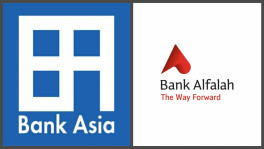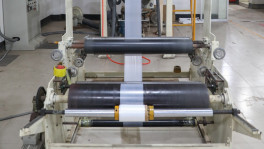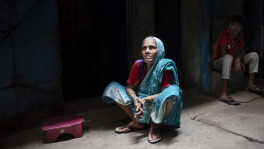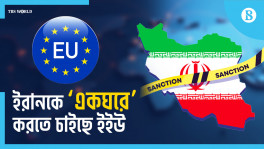Massive dredging promises to boost river channel, adds 2,300km of waterways

Massive dredging in recent years has brought back navigability to many rivers and opened up new routes, adding 2,300 kilometres of waterways to the country's river system.
Bangladesh now has at least 5,900km of waterways during the dry season, up from only 3,865km in 2005. The rise in waterflow in the rainy season adds another 2,000km to the system, said State Minister for Shipping Khalid Mahmud Chowdhury.
Natural siltation, construction of structures, such as the Farakka dam, and a lack of maintenance had clogged up rivers at many points since 1960 when waterways were 12,000km.
Waterways are considered the cheapest route for cargo transportation. A 2007 World Bank study showed that carrying a tonne of goods a kilometre cost Tk0.99 through waterways while it is Tk2.74 if transported through railways and Tk4.50 by road.
To get the advantage, the government in 2008 set out to recover the lost routes. It purchased 32 dredgers over the last decade, put those to use and engaged the private sector as well to clear the rivers with their machinery, the state minister said.
According to the Bangladesh Inland Water Transport Authority (BIWTA), preparations are on to launch commercial operation of several new river routes, including one from Dhaka to Gazipur, and new waterways in the southwestern region.
This achievement is part of the government's dredging master plan aimed at restoring navigability of 10,000km of river routes within a few years, said BIWTA Chairman Commodore Golam Sadeq.
Right now, there are dredging projects in progress in 53 rivers. One of the projects is to create a circular river route around Dhaka.
Moreover, a World Bank-funded project is being implemented to create a communication channel between Dhaka and Chittagong by 2024.
In addition to 10,000km waterways, the shipping ministry is taking up a project to revive a channel between Magura and Khulna and another between Magura and Barisal.
Technology for transparency
While billions of dollars are going into dredging, questions arise about transparency in the spending and about the quality of work.
There are allegations that contractors often collect their bills without completing their tasks because it is difficult to measure the amount of silt being pumped out of the rivers.
"To ensure transparency, we have taken a project under Indian line of credit to install a computerised monitoring system for dredging works," said State Minister Khalid Mahmud Chowdhury.
Dredging is a continuous job as Bangladeshi rivers carry a large amount of sediments all the year round.
"For instance, last year the Mawa-Paturia route was closed four times due to floods. The waterway became only two feet deep from 10 feet overnight. To clear it, 10 dredgers simultaneously pumped out sediments, but silt just came back," Khalid added.

Decades of siltation
Dredging in the country started with a vision of Bangabandhu in 1972 after the country's independence, the state minister told The Business Standard.
"He observed that the navigability of rivers had already declined and so he made an arrangement to purchase seven dredgers."
After the assassination of Father of the Nation Sheikh Mujibur Rahman in 1975 and until 1996, the subsequent governments did not have any goal to develop the country's waterways, Khalid said.
Sediment that settled on the riverbed year after year hindered the waterflow, thus causing the rivers to lose navigability.
The Sheikh Hasina-led government upon assuming office in 1996 took various steps, including one to clean up the rivers around Dhaka.
After the Awami League returned to power in 2008, the government bought 32 dredgers in phases, and now including the old ones, the BIWTC has 39 dredgers.
The state minister said the government would get 35 more dredgers and support boats of different sizes to meet its target.
"This is not just about buying equipment. It is also creating employment," he said.
As many as 1,600 people have already been employed for operation and maintenance of 20 dredgers and support boats. More people will be hired for the purpose.

Beneficial consequences of dredging
Dredging works led to remarkable improvement of the ecology of surrounding areas of the rivers, BIWTA officials say. River transportation has also become safer and more comfortable.
Experts say that due to the rising water flow, farmers can easily irrigate their land, and natural habitats for plants and animals have improved.
Dredging also reduced the risk of flooding and drainage congestion and enhanced nutrient retention and carbon sequestration.
It became instrumental in protecting the rivers with better water quality.
The BIWTA has also dredged to recover riverways in the Gumti River (Narayanganj-Daudkandi route), the Shitalakhya (Demra-Ghorashal-Kotiadi), the Meghna (Laharhat-Bheduria), the Shaheberhat channel (Shaheberhat-Tungibari), the Arial Kha and Shandhya rivers (Ramchar-Madaripur), the Kaliganga and Ghagar rivers (Chandpur-Hularhat), the Turag (Sadarghat-Ashulia), the Arial Kha (Dhaka-Jajira-Maadaripur-Peyajkhali), the Kumar River (Madaripur-Gopalganj), the Madhumati River (Bilrut), and the Gumti, Modhumati and Shaildah rivers (Daudkandi-Haridaspur).


 Keep updated, follow The Business Standard's Google news channel
Keep updated, follow The Business Standard's Google news channel
















